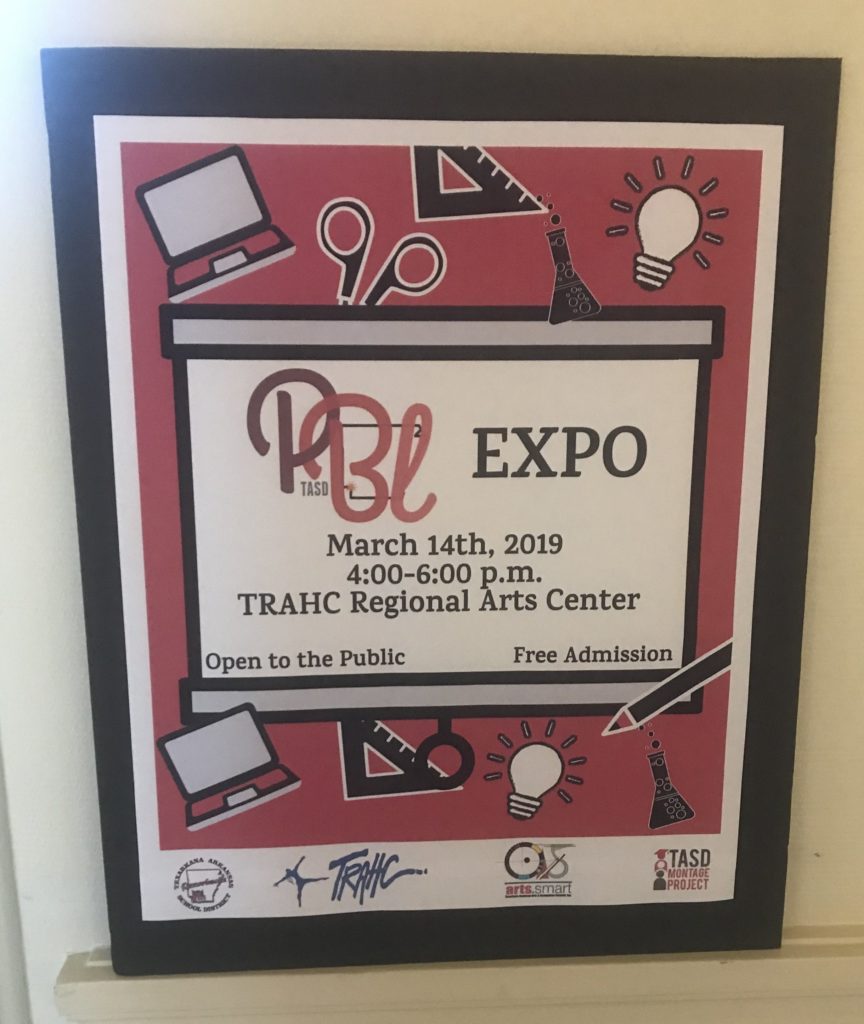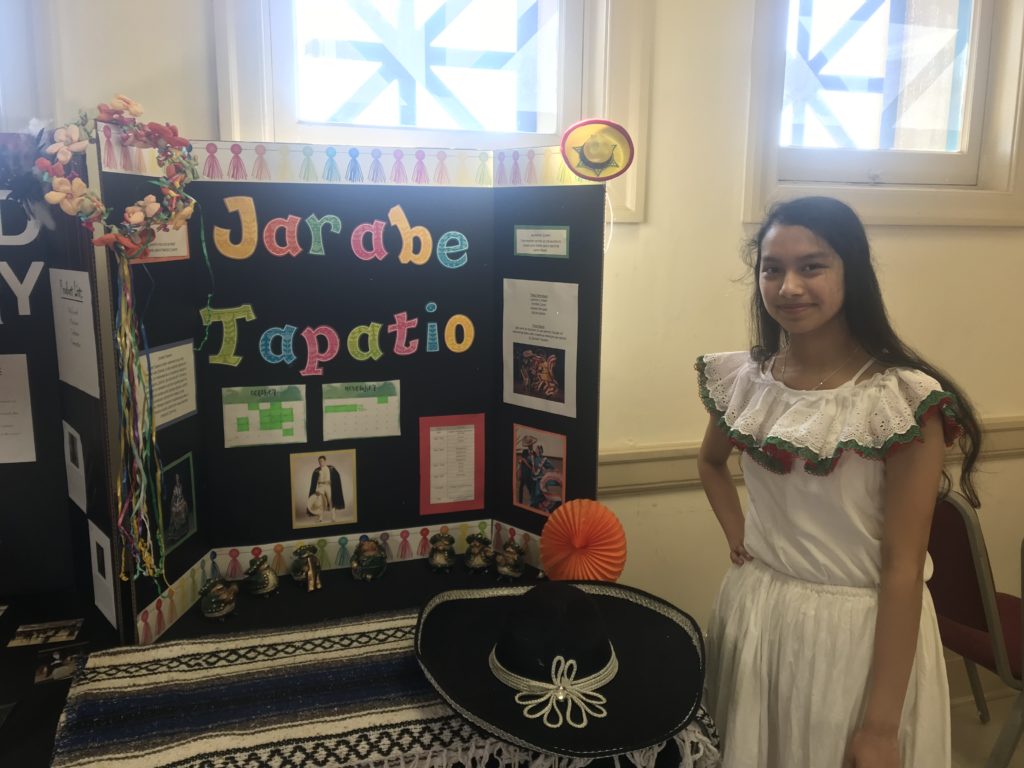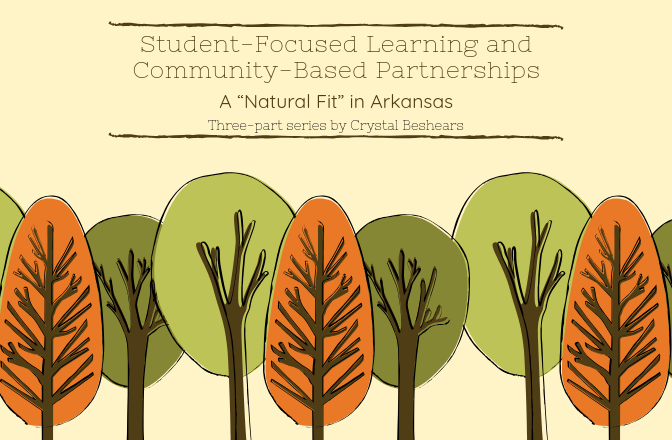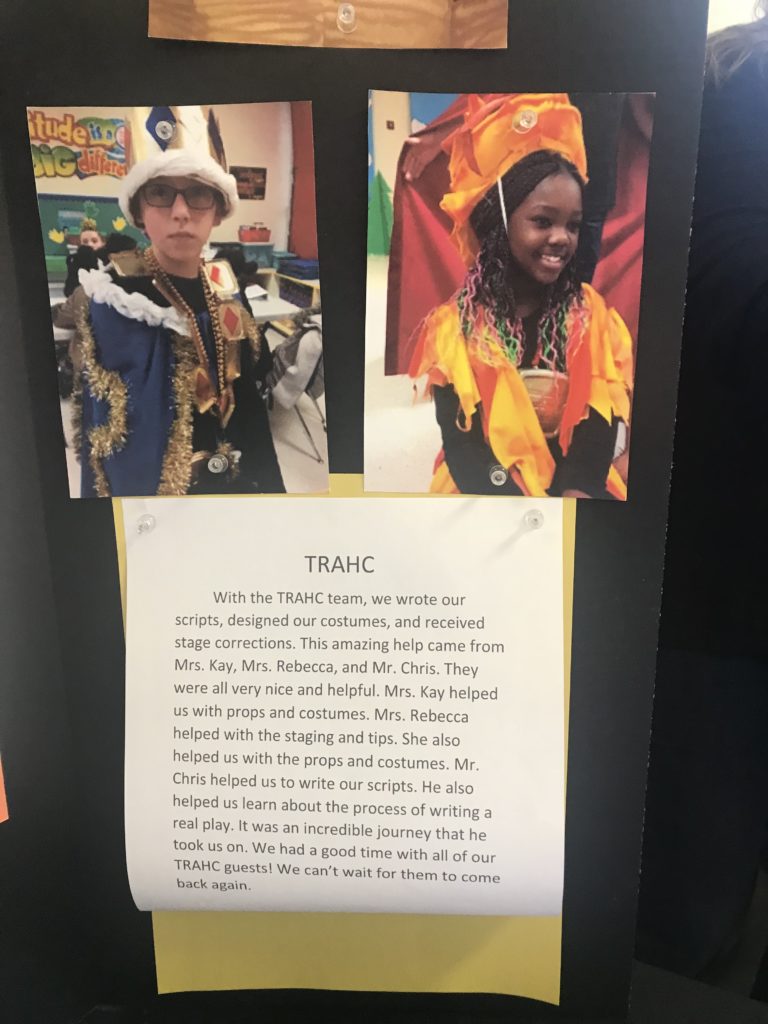In the past few months, I’ve had the pleasure of spending significant time in schools with educators, students, families, and community and business partners who are transforming learning for their students. Drawing on their community and business partnerships, as well as the needs, strengths, and interests of their students, families, and community, these schools and districts are changing the game in Arkansas! Keep reading to learn how these schools are putting students at the center and walk away with some inspirational, practical, and locally-tested ideas for your school. I’ll be releasing one district or school per month over this spring and into the summer!

On March 14th, students, teachers, parents, family, and community and business partners from the area packed the historic Texarkana Regional Arts Center for the district’s annual Project-Based Learning Expo. Meaningful and student-led learning where students find “greatness” is a key driver of the district’s commitment to project-based learning and the Expo is a way to celebrate demonstrations of this type of learning. Upon entering the historic art center, I was greeted and escorted by two friendly student faces and welcomed by volunteer teachers and parents. A buzz of excitement was in the air, and in some places the rooms were so packed with kids and their families that I was unable to see beyond a few feet in front of me! Every floor and corner of the center was full of student work, students describing their work, and student supporters.
Projects on exhibit ranged widely in their methods and themes. Projects included historical reenactments with a modern twist, plays about current events and issues, project boards displaying students’ original writing and art, inquiry-based projects students completed in teams to apply concepts and address school and community needs. It was evident that throughout the project-based learning that resulted in the exhibits, students were challenged to think about themselves as learners, designers, collaborators, and community members.

Several students described to me the challenges they faced, and what they learned from their project. While some focused on discrete academic concepts, many spoke of themselves as learners–describing how they learned teamwork, problem-solving, working with adults and real people in the community doing real jobs. They learned that doing work you are proud of often challenges you in new ways and the trick is to keep trying. Their reflections reminded me of the following adage, “process over product.”
As I think about the district educators, partners, and parents I spoke with that night, their lessons mirrored those of the students! Whether it was a district-level director, community or business supporter, a classroom teacher, or parent, I heard stories about collaboration, staying with the process, and asking for and receiving support. A real emphasis of the following emerged among these comments: embracing the messiness of learning, the importance of collaboration, and most of all, a commitment to lifting the greatness of every kid and supporting them as they grow and develop as learners. Throughout the event, I noticed parents, teachers, and family members standing by, beaming with big smiles, adding to their learner’s story, and asking hard questions!
Many projects focused on the real needs of the school, learner, and community. For example, students from Edward D. Trice Elementary presented their project on improving drainage for the school playground. Students integrated several disciplines to study the drainage needs and collaborated with engineers to better understand the problem. While several of the students I spoke to did a great job describing the depth of their learning, one student’s share stood out to me. He said a highlight for him was being able to “work and communicate with adults on a real problem”.
It is difficult to capture and describe all the work and collaboration going on behind the scenes to make something of this magnitude happen. District and school leaders have worked tirelessly to secure grants, sustain the work of past grants, and expand their impact and resources through collaboration with community and business partners. The partnership with the Texarkana Regional Arts and Humanities Council (TRAHC), a non-profit dedicated to “an energized, creative, and connected community,” allows the school access to visiting artists that represent a variety of art genres. Dancers, musicians, storytellers, craftsmen, and actors work in schools and share their skills and talents with the students and staff.
The classroom environments encourage students to explore, discover, and create. And, project-based learning which was often based on student interests, passions, and unique gifts, drives the learning. Project-based learning and arts infusion, along with an emphasis on other fields in STEAM, has been growing in many schools in the district since 2013, and for some schools and classrooms, much longer. The quality of the work, the articulateness of the students, and the collaboration of learners of all ages demonstrated that night did not happen overnight! Like I said, process over product!
If you are looking for an entry point for student-focused learning in your school and district, I encourage you to learn more from pioneers in Arkansas like Texarkana! Project-based learning has become an important tool for designing and assessing learning in their student-focused learning system.
How might you start your journey into student-focused learning? Consider the “why” of the learning tasks that take place in your school. What is the purpose of assessment in your classroom, school, district, and community? What are some assessments you do regularly or have done in your adult life that have been meaningful AND challenging? What might you bring forth from that reflection for your students?
The student and adult learners I met that night described the learning leading up to the student-expo night as more of a validation and celebration of learning. The really hard work was happening for months in their school communities and was assessed multiple times, in multiple ways, over time, with a lot of feedback, student input, and trial and error. The collaboration was rich, and students were challenged to dive deep in their learning, collaborate with each other, communicate, and continuously refine and improve their work.
The lesson? Don’t forget to draw on experience and support of the community-members you meet every day-your students, the teacher next door, and the community and business partners in your neighborhood and region…. Often what we need is right in plain sight!



